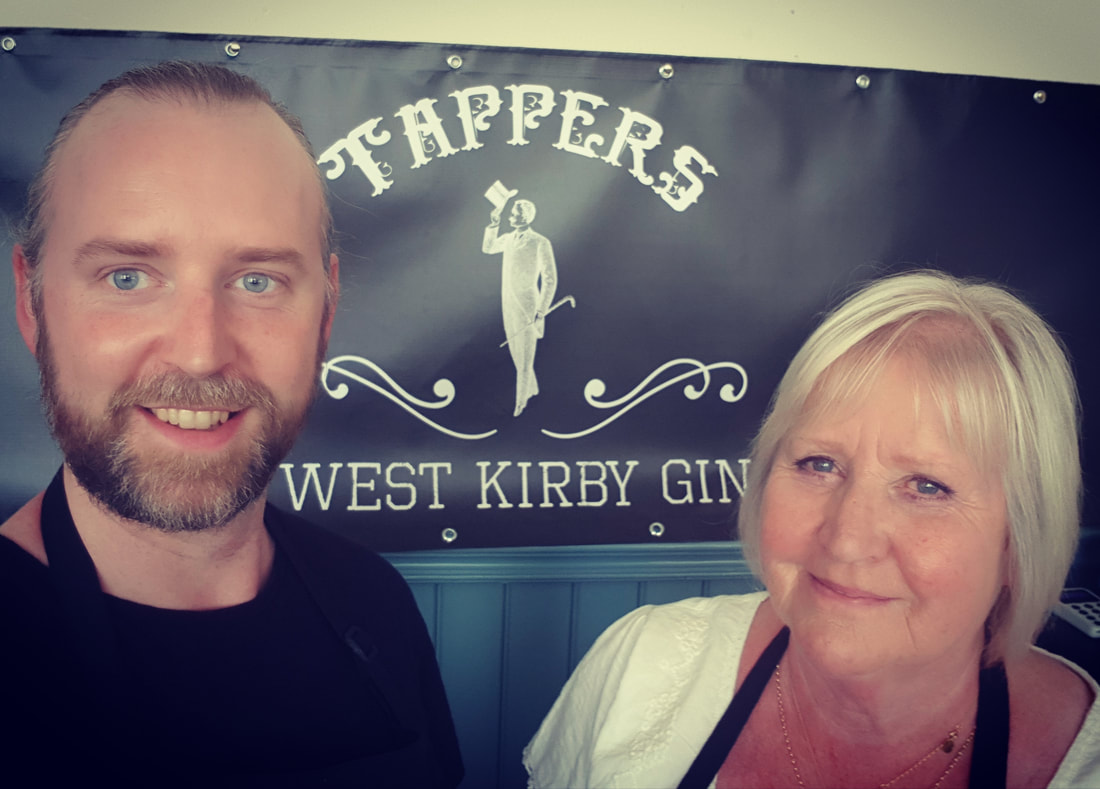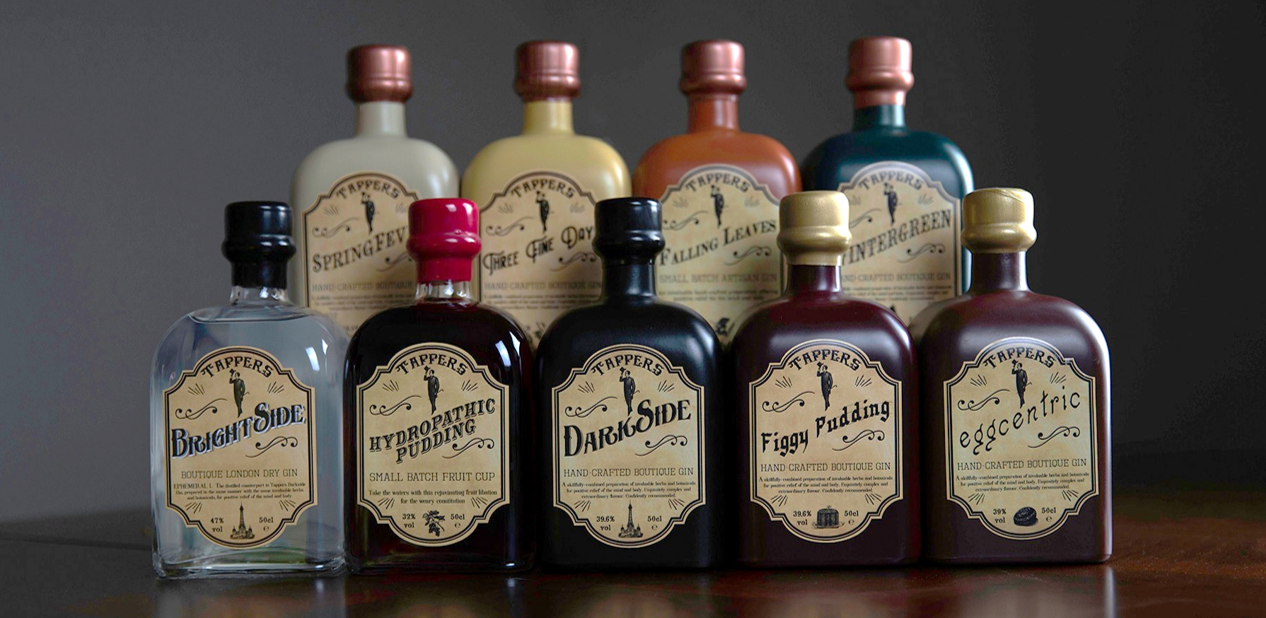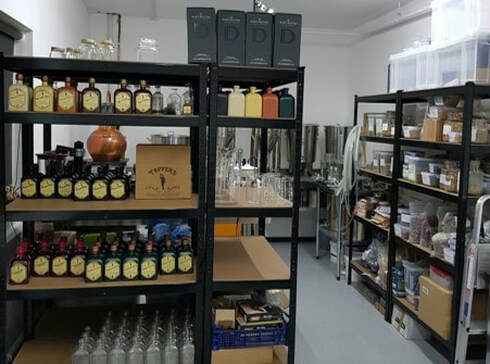|
What did you do before creating Tappers Gin? I worked at a well-known University. I’m often asked if my PhD is in Chemistry or something fitting for being a gin producer but, sadly not! It has helped me to appreciate the need for extensive research into botanical ingredients, though, and I’ve certainly learned a lot of useful chemistry along the way! What made you decide to create Tappers Gin? I discovered gin when the craft gin movement was really beginning to take off with brands like Sipsmith Gin hitting the scene around 2009. I found the spirit was fascinating in how diverse it could be in flavour and profile so it became a passion to track down rare or unusual releases from producers around the world. A few years later, with a blog called “Take it on the Gin” and a modest following and many gin festivals checked off on my list, I had a revelation: that many of the unique, beautifully packaged, ‘hyper-local’ bottles of liquid I’d collected over the years – often at great expense – were in fact produced by the same big UK distilleries that had been contracted out to produce for brand owners. The local stories I’d bought into weren’t genuine in many cases and I was devastated. I also felt foolish that I’d believed it all, so I refused to drink gin and moved on to craft beer, closed my blog, closed up my home collection never to open a bottle I’d purchased, and threw my toys out of the pram! Six months of ranting later and I decided to turn my frustrations about lack of consumer awareness and misleading branding into something constructive. Over a pint of craft beer, and much encouragement from friends bored to death with my grumbling, I decided to make my own gin and show that it could be done. What's the inspiration behind Tappers Darkside Gin? The inspiration for our first release, Darkside Gin, came from the local area. I wanted to prove a local gin really could be local, so I set about researching local seaside botanicals that grow around my hometown of West Kirby and the rest of the Wirral Peninsula, and the flavours they’d impart. I also decided to use a traditional but often overlooked method of production - cold compounding. It’s been done before but usually to poor quality standards, so I wanted to also prove that compound gin could be just as good as its distilled compound given the right attention to detail and quality of ingredients. It took a year of experimenting, and a further six months of paperwork, to get everything in place ready for launch in May 2016. Can you tell us more about the distillery? Our distillery is tiny! It’s nano, rather than micro, even. And, these days, we do distill as well as compound - it’s just not the mainstay of our range - so we do refer to ourselves as a distillery even though we’re not really well-known for distilling. We have 3 traditional copper pot stills, true to the historical methods that are at the heart of our brand - 40 litre 'Lena' named after my Nan, 20 litre 'Susan' named after my Mum who has been a huge help and support with the business, and our 5 litre test still called 'Freya' after my niece. We use these to produce bespoke or limited releases of distilled spirits – not just gin. Can you tell us more about the botanicals and the cold compounding process? We compound our core Tappers range in stainless steel conical fermenters that you’ll more commonly find in the brewing industry. We have a lot in common with breweries in that sense as compounding sort of crosses into both areas. Our botanicals are all natural – our whole ethos, given how we got started, is to use real, whole, natural ingredients. It’s also essential to producing a good quality compound gin – you get out what you put in and there’s no hiding anything. Our Darkside Gin, true to its seaside connection, is made using foraged sea beet (we forage part, and Christian Fraser of River Cottage fame forages the rest), chickweed, and red clover along with some of the traditional gin botanical fare such as coriander. And juniper. Lots of juniper, of course! We also produce seasonal gins throughout the year: each one runs for 3 months at a time and is made using botanicals appropriate to the period when it’s available. They’re also different styles: 'Springfever' is floral, 'Three Fine Days' for summer is citrus, 'Falling Leaves' is spiced for autumn and for winter we have our aromatic 'Wintergreen Gin'. What can people expect and experience if they visit the distillery?
We have a Tasting Room for events, adjacent to our main production space at the Distillery, to host intimate gin tasting sessions and also welcome people in to the space. One of the things we’re keen to do is showcase everything we do: to show visitors exactly what goes in to making our gin, how we make it, and to demonstrate the authenticity of our production. No buzzwords or marketing, just honesty. Visitors also get the chance to sample some of our products that are exclusive to the distillery and not on public release. What have been the biggest challenges and achievements so far? Our brand is quite unique and distinctive – it had to be for a family business and town that nobody had heard of before! In a market flooded by contract distilled gins, it has been difficult to protect our identity. It’s been eye-opening how unscrupulous people can be in business, sadly. Looking back, I realise how naïve I was when I got started. Our biggest achievement as a brand has been the recognition and appreciation we’ve had from the restaurant scene. We’ve had tremendous support from some of the UK’s best chefs and really found a home in fine dining and among foodies who truly understand what we’re aiming for with our gin. Why do I keep going, despite the challenges? When I attend an event, like a festival or tasting, and I’m reminded there are consumers out there who enjoy drinking the gin I’ve spent hours labouring to produce, it gives me great pleasure and an incredible sense of achievement. It definitely keeps me motivated, knowing that I’ve made something someone else enjoys. I also love meeting people as passionate as I am about gin so it’s great to speak with bloggers and others within the industry who ‘get’ what we’re all about! How would you describe Tappers Darkside Gin in 3 words? Distinctive, flavourful, and (I best be honest as always!) polarising! I wouldn’t have it any other way, though - the worst insult to me would be for someone to refer to my gin as ‘generic’. What's your favourite way to drink Tappers Darkside Gin? I’m a traditionalist so I must admit I default to a good old G&T. However, our Darkside Gin is taken neat or on the rocks frequently – especially by whisky drinkers – because it’s smooth enough to be treated as a sipping gin. Falling Leaves makes a mean Last Word and I’m a huge fan of a good Negroni. Darkside is perfect in the mix as a bold enough gin to stand its ground against the other two spirits. All of our gins are pretty flavourful and complex so they’re versatile enough to be used in variety of serves from classic cocktails to modern twists. What gins would you always have on your gin shelf (other than your own of course!)? I think Beefeater Gin is one of the most underrated classic juniper-led gins at that price point, so there’s always a bottle in my cupboard. I admit I also still collect rare or unusual releases, provided they meet the criteria of being made where they say they are! To name a few: Four Pillars Bloody Shiraz, Man Behind the Curtain Gin (the new collaboration between Slingsby Gin and Michael O’Hare which I picked up on a recent visit) and Perry’s Tot – a Navy Strength from the New York Distilling Company. What's next for Tappers Darkside Gin - any exciting plans? We’re looking forward to taking part in this year’s Junipalooza, meeting people around the country on the festival circuit, and dabbling in a few experimental editions! Also Read... The Gin Guide's profile, tasting notes and review of Tappers Darkside Gin Comments are closed.
|



 RSS Feed
RSS Feed


